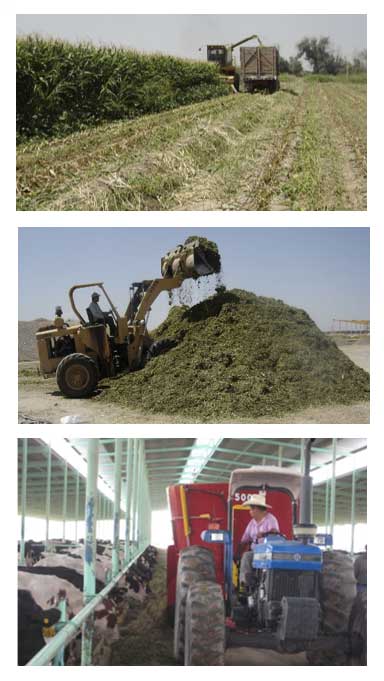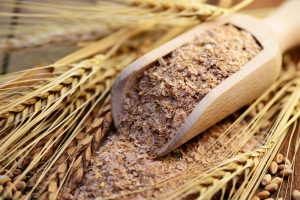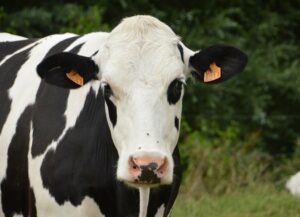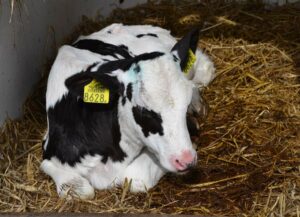Juan I. Sánchez-Duarte, David G. Reta-Sánchez, Esmeralda Ochoa-Martínez, Arturo Reyes González, Karla Rodríguez-Hernández, and Damián Torres-Hernández
Forages are the most important component in dairy cows’ diets because they are a source of nutrients and effective fiber. These contribute dramatically to the consumption of dry matter and nutrients; in addition to maintaining normal rumen functioning in animals. The inclusion of forage in diets for dairy cattle can vary from 40 to 80% on a wet basis.
The main forages used in dairy farms in Mexico are corn and sorghum silages, hay or alfalfa silage, and small grain cereals. Due to heat stress and reduced water availability caused by climate change, the yield and nutritional quality of these forages will be threatened in the future. It is therefore necessary to find alternative crops with good forage yields, and high nutritional quality that grow under these conditions and contribute to the sustainability of the dairy industry in Mexico.
Climate change and its effect on forages
Main problems associated with climate change that significantly affect the production of forages in the country are the increase in temperature and water shortages. Mexico is highly vulnerable to the impacts of climate change and it is expected, with 50% probability, that average temperatures will increase around 1.5 to 2˚C by 2100 (SEMARNAT-INECC, 2016). This change will not affect all states equally, since it has been reported that the Atlantic Ocean region and the north of the country are where temperatures have increased most rapidly (Greenpeace, 2010). It can be expected for prolonged drought events to occur. In the Region Lagunera for example, one of the main dairy areas in Mexico, an increase in the average annual temperature has been observed during the last 43 years (Figure 1). Additionally, precipitation has been irregular and has shown a decrease from 1988 to 2018, with was one atypical year (2003) that had around 700 mm of rain (Figure 2). Low rainfalls associated with low groundwater recharge due to runoff, have caused an imbalance between replenished groundwater and the one extracted from the main aquifers of the Region Lagunera (Figure 3; CONAGUA, 2015). Therefore, the increase in environmental temperature and the over usage of water for irrigation purposes is seriously affecting forage production and the sustainability of milk production in this region.
 Figure 1. Average annual temperature from 1975 to 2018 in the Region Lagunera, Mexico.
Figure 1. Average annual temperature from 1975 to 2018 in the Region Lagunera, Mexico.
 Figure 2. Average annual rainfall from 1975 to 2018 in the Region Lagunera, Mexico.
Figure 2. Average annual rainfall from 1975 to 2018 in the Region Lagunera, Mexico.
 Figure 3. Extraction and recharge of groundwater in the main aquifers of the Region Lagunera, Mexico during 2015.
Figure 3. Extraction and recharge of groundwater in the main aquifers of the Region Lagunera, Mexico during 2015.
Both high temperatures and water insufficiency significantly affect crops growth and development. Sustained high temperatures for several days or an extreme increase for just a few hours can negatively affect pollination, grain filling, and photosynthesis (Hatfield and Prueger, 2015). Temperatures above 35˚C have been shown to reduce pollen viability and the photosynthetic rate in cereal grains such as corn (Barnabas et al., 2008). On the other hand, the availability of water either through precipitation or irrigation is the most important factor for forage production. Water shortages during critical developmental stages also affect the same reproductive processes caused by high temperature stress (Cakir, 2004). In either case, whether stress due to high temperatures or lack of water, forage dry matter yields are seriously reduced.
High temperatures also influence forage quality. Crops grown under high temperature conditions usually accelerate their maturity, which enhances lignification of plant cell walls, and consequently affect forage nutritional value by reducing fiber digestibility (Van Soest, 1994). Corn silages with higher concentration of lignin, fiber and protein, and low starch content, could suggest high temperature stress (Ferreira and Brown, 2016). This is the result of a higher metabolic activity, where the photosynthetic pathway prioritizes the synthesis of structural plant components (cell walls), and reduces soluble carbohydrate contents (Van Soest et al., 1978).
The effects of a water restriction on forage nutritional quality have also been widely studied. Crude protein and fiber concentrations were decreased in alfalfa grown under water stress conditions (Abid et al., 2016). The reduction in crude protein was related to lower nitrogen availability, which was to either the result of low mineralization of this element in the soil, or perhaps a decrease in the transport of nitrogen from the roots to the shoots. The decrease in fibrous fractions could be associated with a lower incorporation of carbon into the cell wall, which delays maturity and promotes a greater leaf-stem ratio (Van Soest, 1994). Other forage quality parameters such as nitrate accumulation, which threatens livestock, or a reduction of soluble carbohydrates in the foliage, essential for optimal silage fermentation, are negative effects resulting from drought.
In general, higher temperatures and dry conditions will negatively affect production and quality of traditional forages in dairy farms. A practical alternative to this problem could be the use different forages which allow for the development of new forage production systems with good dry matter yields, acceptable nutritional quality, and greater adaptation to climate change.
Alternative forages in dairy farms
Finding alternative crops with agronomic characteristics that will allow quantity and quality forage to be produced in adverse high temperature conditions and lower water availability, is the most practical option in the short term in Mexico. In the Region Lagunera agronomic research has been carried out to identify alternative forage crops with production potential during the autumn-winter and spring-summer cycles. A total of around 16 forage species have been evaluated at the present time (Reta et al., 2008). Of these crops, soybeans associated with corn to improve forage nutritional composition (Reta et al., 2010a), in addition to canola and safflower since their need less water but produce a forage with high nutritional value (Reta et al., 2010b), have been the most promising plant species. These crops have also demonstrated the capacity to increase water productivity annually when they are included in traditional crop patterns such as corn and oats (Reta et al., 2015). Moreover, the planting method (Reta-Sánchez et al., 2016a) and population density (Reta-Sánchez et al., 2016b) for canola have been studied. Validation plots were also conducted to test the yield potential of this crop as a forage with a greater efficiency in the use of water compared to oats (Reta et al., 2016).
 |
 |
|
Corn soybean-silage 3 Romero Dairy Farm |
Canola silage Lanchares Dairy Farm |
The preservation as silage of alternative forage crops and their use in dairy cattle feeding have also been evaluated and validated in commercial dairy farms. It was found that using canola, from sowing to its preservation in the silo, was carried out without problems using the agricultural equipment and materials commonly used to make silage of traditional crops (Sánchez et al., 2011). In fact, when canola silage was experimentally compared with alfalfa haymaking, it was found that the fermentative and nutritional quality characteristics both with and without microbial inoculation was similar (Table 1; Sánchez et al., 2014). Canola silage however has shown better fermentation and nutritional quality characteristics when compared to oats and triticale silage (Sánchez et al., 2011). Canola silage had lower pH and a better volatile fatty acid profile than oats and triticale silages. Similarly, canola silage had higher CP contents and energy (estimated) than oats and triticale silages (Table 2). The NDF content was lower in canola silage than in oat and triticale silages.
Table 1. Nutrient composition and fermentation of canola silage and alfalfa haylage with and without microbial inoculation under experimental conditions.
| Canola | Alfalfa | ||||
|
Item |
With inoculant | Without Inoculant | With inoculant | Without Inoculant | |
| Nutrient composition, % of DM | |||||
| DM, % of silage or haylage | 34.65 | 34.78 | 48.15 | 45.63 | |
| Protein | 25.99 | 25.88 | 27.08 | 27.31 | |
| NDF | 23.50 | 23.28 | 29.03 | 28.08 | |
| NFC | 31.59 | 32.05 | 29.35 | 29.76 | |
| TDN | 59.82 | 60.27 | 61.08 | 61.89 | |
| NEL, Mcal/kg DM | 1.48 | 1.47 | 1.49 | 1.51 | |
| Fermentation, % of DM | |||||
| pH | 4.2 | 4.2 | 5.0 | 4.4 | |
| Amonia-N, % of total N | 12.18 | 11.39 | 8.0 | 10.30 | |
| Lactic acid | 12.68 | 11.28 | 7.45 | 11.75 | |
| Acetic acid | 11.04 | 9.47 | 10.31 | 12.19 | |
| Propionic acid | 7.40 | 0.00 | 2.19 | 3.03 | |
| Butiric acid | 0.00 | 0.00 | 0.00 | 0.00 | |
Microbial inoculation: 10 g/t of ensiled forage
Table 2. Nutrient composition and fermentation of canola, oat, and triticale in a commercial dairy farm.
| Silage | |||
| Item | Canola | Oat | Triticale |
| Nutrient composition, % of DM | |||
| DM, % of silage | 40.86 | 37.43 | 39.07 |
| Protein | 20.35 | 16.43 | 15.35 |
| NDF | 33.37 | 54.21 | 57.95 |
| NFC | 27.19 | 14.79 | 12.43 |
| TDN | 54.12 | 49.16 | 47.28 |
| NEL, Mcal/kg of DM | 1.28 | 1.11 | 1.03 |
| NEM, Mcal/kg of DM | 1.24 | 1.00 | 0.90 |
| NEG, Mcal/kg of DM | 0.67 | 0.45 | 0.36 |
| ME, Mcal/kg of DM | 2.09 | 1.84 | 1.74 |
| Fermentation, % of DM | |||
| pH | 4.3 | 5.04 | 4.62 |
| Amonia-N, % of total N | 12.75 | 22.77 | 18.17 |
| Lactic acid | 16.69 | 8.65 | 7.59 |
| Acetic acid | 3.82 | 3.08 | 3.52 |
| Propionic acid | 1.66 | 4.91 | 5.26 |
| Butiric acid | 0.00 | 0.54 | 0.00 |
When canola silage was used to replace oats silage in growing Holstein heifer diets, there was no difference in average dry matter intake (Sánchez et al., 2011). A second test was conducted in 2012 to evaluate the effects of replacing oat silage with canola silage on feed intake and daily weight gains in 7 to 9-month-old Holstein heifers. The diet with canola silage had more protein and energy and less NDF than the oats silage diet (Table 3). In general, it was observed that heifers fed the canola silage diet consumed on average 0.2 kg/day more dry matter than those that received the oats silage diet (Figure 4). This resulted in greater daily weight gains in the heifers fed the diet with canola silage (Figure 5). Increases in dry matter intake and weight gains in heifers fed canola silage could be associated with lower fiber concentrations and higher protein and energy contents compared to the oat silage diet.
Table 3. Ingredient and nutrient composition of diets containing canola and oat silage in a commercial dairy farm.
| Diet | |||
| Item | Canola | Oat | |
| Ingredients, % of DM | |||
| Sorghum silage | 49.55 | 49.55 | |
| Canola silage | 39.06 | – | |
| Oat silage | – | 39.06 | |
| Corn Straw | 2.50 | 2.50 | |
| Soybean meal solvent extracted 48% CP | 8.29 | 8.29 | |
| Mineral premix | 0.60 | 0.60 | |
| Nutrients, % of DM | |||
| DM, % of diet | 35.69 | 34.61 | |
| Protein | 16.70 | 15.20 | |
| ADF | 35.00 | 37.50 | |
| NDF | 46.50 | 54.30 | |
| NFC | 27.50 | 20.10 | |
| Ether extract | 2.50 | 3.20 | |
| Ca | 0.80 | 0.40 | |
| P | 0.40 | 0.41 | |
| Mg | 0.30 | 0.25 | |
| K | 2.14 | 2.89 | |
| S | 0.22 | 0.19 | |
| ME, Mcal/kg of DM | 2.21 | 2.06 | |
| NEG, Mcal/kg of DM | 0.76 | 0.64 | |
 Figure 4. Dry matter intake of Holstein heifers fed diets containing canola and oat silage.
Figure 4. Dry matter intake of Holstein heifers fed diets containing canola and oat silage.
 Figure 5. Average daily gain of Holstein heifers fed diets containing canola and oat silage.
Figure 5. Average daily gain of Holstein heifers fed diets containing canola and oat silage.
Corn-soy silages have also been evaluated commercially. Sánchez et al. (2012) conducted a test to validate the effects of adding three different silages to the diets of lactating Holstein cows: 1) corn and soy were sown separately then ensiled on a 50:50 ratio (50:50 corn-soy), 2) the corn-soy silage crop was planted alternating one row of corn and one row of soybeans, and 3) straight corn silage only. There were no difficulties observed making silages with the equipment used to ensile traditional crops. The corn-soy silage (50:50) had higher pH and ammonia nitrogen compared to the other two silages. This suggested the soy forage acted like a buffer and that there was protein degradation in the silo. Crude protein was higher in the 50:50 corn-soy silage, but NDF and ADF concentrations were lower (Table 4). It was found that the interspersed corn-soy planted silage and the straight corn silage had better fermentation compared to the 50:50 corn-soy silage. Regarding the cost of silage production, it was less expensive to produce intercropped corn-soybean silage ($0.63 / kg as offered) than 50:50 corn-soy silage ($0.86 / kg as offered) and straight corn silage ($0.71 / kg as offered). This same cost trend was observed for protein and energy contents among silages.
When these silages were included in the diet of lactating Holstein cows, higher protein content and lower NDF concentrations were observed in the diets with silage from interspersed corn-soy and the straight corn silage than in the diet containing 50:50 corn-soy. In addition, the 50:50 corn-soy association silage diet had less NFC and energy contents compared to the other two diets (Table 5). When feeding cows with diets containing corn-soy silages, a higher DM intake was observed in cows fed diets containing silage from interspersed planted corn-soy and straight corn silage compared to cows fed 50:50 corn-soy (Table 6). This could be since the higher concentration of ammonia nitrogen from 50:50 corn-soybean silage restricted intake. However, milk production was higher when cows were fed the diet containing interspersed corn-soy silage compared to the diets formulated with the 50:50 corn-soy and straight corn (Table 6). These effects were reflected in higher income from milk sales and a considerable profit margin when the interspersed corn-soy silage was included compared to the other two diets (Table 6; Sánchez et al., 2012). Milk composition was similar when cows were fed diets that included the three types of silages.
Table 4. Nutrient composition, fermentation, and cost of corn-soybean silage and corn silage in a commercial dairy farm.
| Silage | |||
|
Item |
Corn-soybean
(50:50) |
Corn-soybean associated |
Corn |
| Nutrient composition, % of DM | |||
| DM, % of silage | 37.15 | 27.87 | 23.59 |
| Protein | 13.04 | 10.97 | 10.44 |
| NDF | 56.14 | 48.93 | 57.33 |
| ADF | 44.31 | 33.04 | 35.93 |
| NFC | 18.43 | 30.38 | 23.30 |
| TDN | 46.30 | 60.62 | 52.10 |
| NEL, Mcal/kg of DM | 0.98 | 1.37 | 1.14 |
| NEM, Mcal/kg of DM | 0.83 | 1.37 | 1.05 |
| NEG, Mcal/kg of DM | 0.29 | 0.79 | 0.50 |
| ME, Mcal/kg of DM | 1.66 | 2.22 | 1.89 |
| Fermentation, % DM | |||
| pH | 4.6 | 4.2 | 3.8 |
| Amonia-N, % of total N | 13.14 | 8.20 | 7.40 |
| Lactic acid | 42.83 | 44.70 | 51.93 |
| Acetic acid | 47.23 | 35.40 | 40.33 |
| Propionic acid | 0.00 | 0.0 | 0.00 |
| Butiric acid | 0.00 | 0.0 | 0.00 |
| Silage cost, $/kg | |||
| As-fed silage | 0.86 | 0.63 | 0.71 |
| Silage as DM basis | 2.45 | 1.81 | 2.02 |
| CP | 18.80 | 16.48 | 19.39 |
| NEL, $/Mcal | 2.50 | 1.32 | 1.78 |
Table 5. Ingredient and nutrient composition of diets containing corn-soybean silage in a commercial dairy farm.
| Diet | |||
|
Item |
Corn-soybean
(50:50) |
Corn-soybean associated | Corn |
| Ingredients, % of DM | |||
| Alfalfa hay | 25.78 | 26.70 | 27.14 |
| Alfalfa silage | 13.07 | 13.54 | 13.76 |
| Sorghum silage | 28.81 | 29.84 | 30.34 |
| Corn silage | – | – | 9.19 |
| Corn-sobean silage | 13.75 | 10.67 | – |
| Cottonseed | 8.62 | 8.93 | 9.08 |
| Concentrate (LALA®) | 9.93 | 10.29 | 10.46 |
| Nutrients, % of DM | |||
| DM, % of diet | 42.67 | 45.29 | 42.97 |
| Protein | 17.23 | 18.16 | 19.46 |
| ADF | 54.61 | 45.68 | 47.81 |
| NDF | 37.90 | 31.50 | 30.75 |
| NFC | 9.93 | 22.40 | 25.01 |
| Ether extract | 2.50 | 2.50 | 2.50 |
| Ca | 1.10 | 1.10 | 1.10 |
| P | 0.54 | 0.50 | 0.50 |
| Mg | 0.34 | 0.35 | 0.35 |
| K | 1.98 | 2.01 | 2.00 |
| S | 0.24 | 0.25 | 0.25 |
| NEL, Mcal/kg of DM | 1.15 | 1.32 | 1.30 |
Table 6. Lactation performance and income of cows fed diets containing corn-soybean silage in a commercial dairy farm.
| Diet | |||
|
Item |
Corn-soybean
(50:50) |
Corn-soybean
associated |
Corn |
| Performance and economic income | |||
| DMI, kg/d | 17.84 | 19.44 | 18.65 |
| Cost, $/DM intake | 78.26 | 78.78 | 80.21 |
| Milk, L/d | 20.80 | 21.67 | 20.65 |
| Income , $/d | 116.48 | 121.35 | 115.16 |
| Margen†, $ | 38.22 | 42.58 | 35.43 |
| Milk components, % | |||
| Fat | 3.63 | 3.62 | 3.64 |
| Protein | 3.24 | 3.31 | 3.31 |
| Lactose | 7.48 | 4.81 | 4.74 |
| Total solids | 12.24 | 12.46 | 12.38 |
†Estimated with DMI and income for milk sell considering a price of $5.60/L of milk.
In conclusion, it is possible to find alternative forages in the future that adapt to milk production systems and adverse weather conditions in Mexico. However, there are other needs that should be considered to successfully introduce alternative forages to these production systems in the country.
Implications
Although it has been shown that there are some crops with forage potential that use less water and are better adapted to climate change, it is still necessary to expand agronomic and preservation research info in other forage species. Silage tests should be performed to evaluate silage compaction, optimum DM of the forage at ensiling time, and effect of different microbial inoculants on the parameters of fermentation and nutritional quality of the silage. Additionally, there is a need to research in greater depth the effects of alternative crop silages already explored on nutrient fermentation and digestibility, DM intake, milk production, and milk composition. Validation plots must be established with these species to demonstrate their production potential, quality, and adaptation in dairy farms, together with seed, agrochemicals and microbial inoculants companies. As a result, dairy producers will be able to adopt and use alternative crops to promote future milk production sustainability in Mexico.
About the authors
The authors are researchers in dairy cattle nutrition and forage quality at the Instituto Nacional de Investigaciones Forestales, Agrícolas y Pecuarias. Campo Experimental La Laguna. Matamoros, Coahuila, México 27440.
References:
Abid, M., Mansour, L.E., Yahia, K.B., Bachar, A., Khaled, B., Ferchichi, A. 2016. Alfalfa nutritive quality as influenced by drought in South-Eastern Oasis of Tunisia, Italian J. Anim. Sci. 15(2):334-342.
Barnabas, B., Jäger, K., Féher, A. 2008. The effect of drought and heat stress on reproductive processes in cereals. Plant Cell Environ. 31(1):11-38.
Cakir, R. 2004. Effect of water stress at different development stages on vegetative and reproductive growth of corn. Field Crop Res. 89:1-16.
CONAGUA (Comision Nacional del Agua). Corte al 2015. 3ras jornadas técnicas de gestión de acuíferos y recarga artificial. Acuíferos críticos del territorio nacional. Torre de Ingeniería UNAM. 26 de abril del 2019.
Ferreira, G., Brown, A.N. 2016. Advances in silage production and utilization. Chapter 2: Environmental factors affecting corn quality for silage production. ISBN 978-953-51-2777-2. INTECH. 39-51.
Greenpeace. 2010. México ante el cambio climático. Evidencias, impactos, vulnerabilidad y adaptación. p. 69.
http://paginas.facmed.unam.mx/deptos/sp/wp-content/uploads/2013/12/vulnerabilidad-mexico.pdf
Hatfield, J.L., Prueger, J.H. 2015. Temperature extremes: Effect on plant growth and development. Weather and Climate Extremes. 10:4-10.
Reta, S.D.G., Figueroa, V.U., Serrato, C.J.S, Quiroga, G.H.M., Gaytán, M.A., Cueto, W.J.A. 2015. Potencial forrajero y productividad del agua en patrones de cultivos alternativos. Rev. Mex. Cienc. Pecu. 6(2):153-170.
Reta, S.D.G., Serrato, C.J.S., Gaytán, M.A., Quiroga, F.H.M., López, S.F., Ordaz, V., Godoy H.J. 2016. Validación de patrones de cultivo forrajeros alternativos con menor estrés por altas temperaturas en la Comarca Lagunera. AGROFAZ 16(1):65-75.
Reta, S.D.G., Serrato, C.J.S., Figueroa, V.R., Cueto Wong, S.J.A., Berumen P., Santamaria C.J. 2008. Cultivos alternativos con potencial de uso forrajero en la comarca lagunera. INIFAP. Libro técnico # 3. 1er edición. ISBN 978-607-425-042-8. p. 268.
Reta, S.D.G., Espinosa S.J.T., Palomo, G.J.S.A.. Serrato, C., Cueto, W.J.A., Gaytán, M.A. 2010a. Forage yield and quality of intercropped corn and soybean in narrow strips. Spanish. J. Agric. Res. 8(3):713-721.
Reta, S.D.G., Figueroa V.U., Faz C.R., Núñez H.G., Gaytan M.A., Serrato, C.J.S., Payan, G.J.A. 2010b. Sistemas de producción de forraje para incrementar la productividad del agua. Rev. Fitotec. Mex. 33(4):83-87.
Reta-Sanchez, D.G., Serrato-Corona, H.J.S., Quiroga-Garza, A.M., Gaytan-Mascorro, Figueroa-Viramontes, U. 2016a. Forage yield and chemical composition of canola (Brassica napus L.) as affected by sowing methods. Grass Forage Sci. 71:281-290.
Reta-Sánchez, D.G., Serrato-Corona, H.J.S., Quiroga-Garza, U.M., Figueroa-Viramontes, A. Gaytán-Mascorro y Cueto-Wong J.A. 2016b. Respuesta de canola para forraje a la densidad de población. Rev. Fitotec. Mex. 39(3):253-258.
Sánchez, D.J.I., Serrato, C.J.S., Reta, S.D.G., Ochoa, M.E., Reyes, G.A. 2014. Assesment of ensilability and chemical composition of canola and alfalfa forages with or without microbial inoculation. Indian. J. Agric. Res. 48(6):421-428.
Sánchez, D.J.I., Reta, D.G., Torres, D.H., Ochoa, M.E., Alfonso Nava. 2012. Ensilado de maíz-soya como forraje alternativo en la alimentación de ganado lechero. Hoard‘s Dairyman en Español. ISSN 1079-2007. #215, 676-679.
Sánchez, D.J.I., Reta, S.D.G., Ochoa, M.E., Serrato, C.J.S. 2011. Ensilado de canola, una nueva alternativa forrajera en la alimentación del ganado lechero: Primeras pruebas realizadas en la Comarca Lagunera. Hoard‘s Dairyman en Español. ISSN 1079-2007. #201, 582-584.
SEMARNAT-INECC. 2016. Mexico’s Climate Change Mid-Century Strategy. Ministry of Environment and Natural Resources (SEMARNAT) and National Institute of Ecology and Climate Change (INECC), Mexico City, Mexico. https://unfccc.int/files/focus/long-term_strategies/application/pdf/mexico_mcs_final_cop22nov16_red.pdf
Van Soest, P.J. 1994. Nutritional Ecology of the Ruminant. Comstock University Press, Cornell University, Ithaca, NY.
Van Soest, P.J., Mertens, D.R., Deinum, B. 1978. Preharvest factors influencing quality of conserved forages. J. Anim. Sci. 47:712-720.
© 2020 Dairy Knowledge Center. All Rights Reserved.









